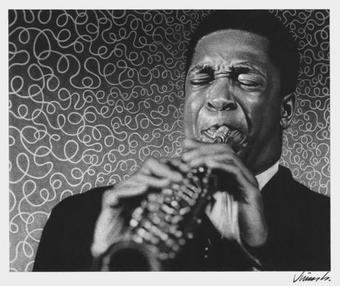
This is the first of two versions of the tune recorded by Coltrane that year; the second, which appeared on the aptly titled Impulse! classic, "Duke Ellington and John Coltrane", was recorded in September.
The main difference between the two versions, is the form (and the intention). The "Ellington" version is a standard 32 bar, AABA classic American song form with a typical late 1940's, Rhythm & Bluesish chord progression on both the A sections and the bridge (in honor of former mentor, saxophonist Big Nick Nicholas, for whom Coltrane wrote the tune). Both 'Trane's and Ellington's solos are played over the complete form.
The main permutation (among others) used here is the triad pair, A and G Major (soprano sax key), which form the hexatonic (6 note) scale A-B-C#-D-E-G, essentially an A mixolydian scale minus the F# (6th scale degree). Coltrane was no stranger to this basic mode and key, as his usage of it originates with his solos on "So What" during the latter part of his time with Miles Davis, as well as on his own versions of the exact same modal changes, "Impressions". He also employs the same mode and key on his tune "India" from the "Live at the Village Vanguard Sessions" from late 1961.
It is interesting to note that this mode in this particular key lays very well on the saxophone. With the open C# and no pinkey keys involved, it facilitates the execution of wider intervals such as 4ths, 5ths & 6ths. It tends to emulate some ancient flute-like fingerings (okay, even a recorder), where only the first three fingers of each hand (and in this case, most likely the left thumb for the octave key) come into play.
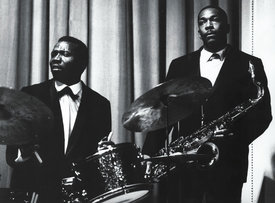
Then there's Elvin! By the time this recording was made, Elvin Jones had been a part of Coltrane's quartet for about a year and a half of constant performing. To say that their connection was telepathic at this point is an understatement. Listen to how they both shape shift back and forth between triplet and quarter note time feel throughout. In fact, 'Trane and Elvin sound here like they're having a brief but intense conversation between two musical archangels, which in essence is not far from the truth.
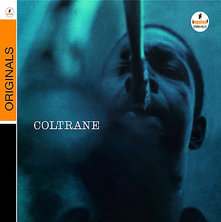
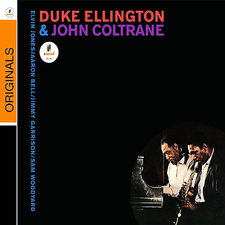
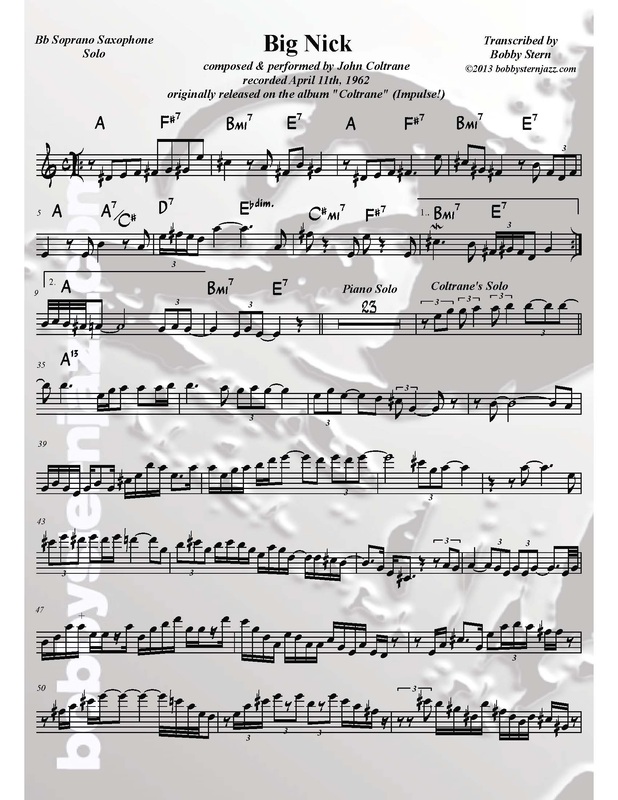

 RSS Feed
RSS Feed









